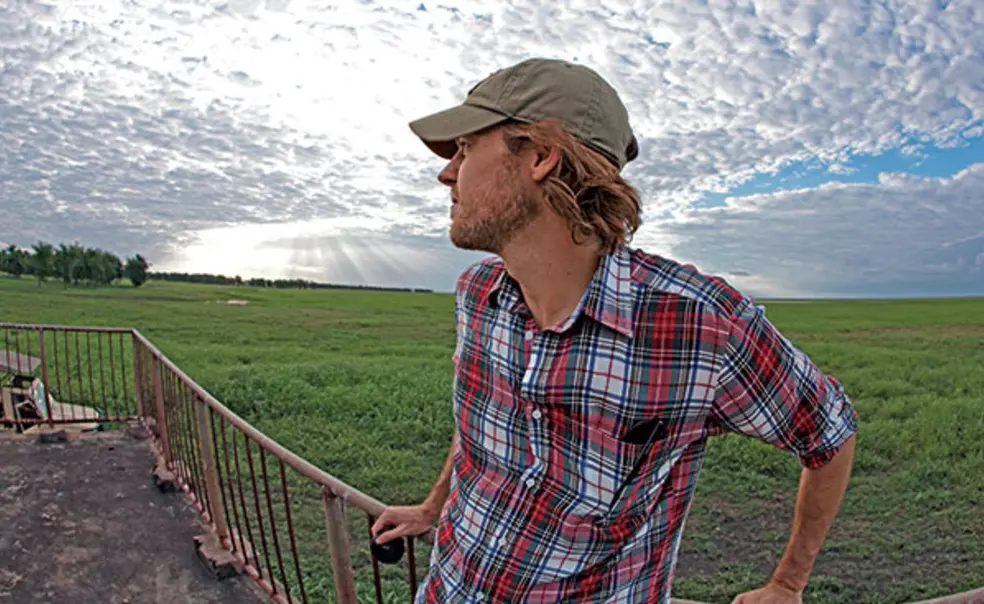Ecology and Evolutionary Biology: Ecological Cost of War
Wildlife, not just people, suffer long-term damage during civil conflicts
When biology professor Robert Pringle and doctoral student Joshua Daskin visited Gorongosa National Park in Mozambique in 2012, they immediately sensed something was amiss. A civil war had ended two decades earlier, and elephants, with their famous memories, were unusually hostile toward humans. The populations of wildlife seemed out of balance, with large animals such as buffalo not as plentiful as in other African parks.
“Something bad had happened, and its legacy was still strong,” says Pringle, who recently had joined the park’s restoration efforts, following the 16-year civil war that ended in 1992. To better understand how warfare affects ecology, they decided to do a comprehensive survey. “We needed to look at quantities of animals across Africa if we wanted to see whether the near-extinction of large mammals in Gorongosa was happening more broadly,” says Daskin. Their results, published in January in Nature, show that warfare has a devastating effect on wildlife. However, results also suggest that postwar restoration efforts can recover what is lost.
Prior to their study, too little data existed to gauge the effect of conflicts on wildlife. In some cases, such as in the Korean Demilitarized Zone or the rainforests of Cambodia, animal populations actually increased, due to a suspension of human activity and extractive industries. In others, however, they were decimated by habitat destruction and poaching by soldiers and civilians in search of food.
Daskin, who is now a postdoctoral fellow at Yale, spearheaded a systematic look at the literature. It took him three years to find population estimates from conflict areas, helped in part by Princeton librarians who tracked down obscure sources. In retrospect, says Pringle, the difficulty of finding data on wildlife in conflict zones should have not have come as a surprise; aspiring biologists would of course favor areas where they wouldn’t be shot at.
That reality was underscored for Daskin in 2013, after a flare-up of violence during which militias were “taking potshots” at cars near the park. Foreigners were encouraged to leave the province, but the violence died down in time to continue the research.
Daskin and Pringle focused on large herbivores such as elephants, buffalo, wildebeest, and antelope, which are especially likely to be affected by poaching. “They are essentially walking stores of meat for people suffering from food insecurity,” says Daskin. “They are also ecologically important. Once you remove these large herbivores, there is a dramatic downstream effect on plants and other animals.”
In the Nature study, they found that between 1946 and 2010, conflict had occurred in 71 percent of protected areas in Africa. During that time, animal populations in conflict-free areas were roughly stable. As conflict levels increased, however, wildlife populations fell dramatically. To quantify this, the researchers calculated the frequency of conflict in each location and compared it with corresponding wildlife populations. Even one outbreak of violence every 20 to 50 years could push animal populations into decline. Every 10 percent increment in conflict frequency added another 2 percent to the annual rate of wildlife population decline — meaning the longer conflicts went on, the greater the effect.
“Even a small amount of conflict can be severely destabilizing to locals’ livelihoods, in ways that end up having detectable negative effects on wildlife,” Pringle says. The researchers examined other factors, such as climate change, drought, corruption, and socioeconomic welfare, and no other factor came close to having the same effect.
On the other hand, even in areas with the most conflict, wildlife populations rarely went extinct, they found. That’s consistent with the idea that populations declined due to poaching, rather than wholesale habitat destruction. That fact offers some hope for even the continent’s most severely affected areas, implying that when the conflicts subside, the remaining animals can seed new populations. “Governments and conservation areas shouldn’t give up on these post-conflict landscapes as totally lost,” says Daskin.
In fact, adds Pringle, restoring them can help rebuild the country in more ways than one. “With some investment and creative thinking, you can even facilitate the recovery process by giving the different sides of the conflict something to come together to work on,” he says. Indeed, at Gorongosa, where wildlife is recovering rapidly, rangers include former combatants from both sides of the conflict. In that way, ecological restoration after civil conflict can heal both the land and its people.












No responses yet